|
Until the 1960’s the Mission Creek Watershed was
used for agricultural and livestock businesses. The proximity to a
water supply, fertile land, and warm climate made this an ideal
place for early settlers. The Ohlone Indians used this area to live
because of these very reasons. They even built a small dam near the
Mission San Jose area. This dam was later enlarged by the
missionaries, who added a mill to grind flour and corn.
Early pioneers in the wine and nursery business
also used Mission Creek as the radiating point for their
businesses. As long as the water flowed their businesses were
successful. The earlier generation of creek users understood the
importance of a clean and flowing creek. They were limited on the
full understanding of the dynamics, but the early users respected
this gift of life.
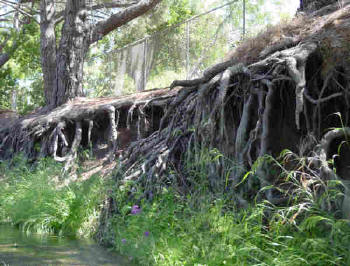 |
|
Undercutting of
large trees along Mission Creek. |
However, developers saw this area as a haven from
city life and started to build homes. They brought with them
asphalt and concrete as they constructed roads and the
infrastructure to support humans in the area. When you have natural
ground cover about 50% is saved in the ground water. However, the
ground can absorb only about 15% when you develop a city’s
infrastructure. Impervious surfaces can cause up to 55% run off of
water. Poor engineering of the surrounding buildings caused
damage to the creek. Erosion caused by rapid water flow caused
undercutting of the large trees that lined the bank. The creek’s
dynamics became unstable and flooding in certain stretches and
fallen trees started to become a problem in the watershed in the
1990’s.
When a creek needs to be “restored” there is an
implied understanding that there has been damage done to that area.
Restoration does not always mean that it will look like an area
before human intervention, but that it will be engineered so humans
and other organisms can coexist. Even without humans, nature
is constantly evolving. In today’s urban landscape it is difficult
to remove all exotic or non-native vegetation. Seeds from local
landscaped gardens will somehow find their way along a creek.
The restoration of Mission Creek is attempting to create a stable
channel bed and bank system while creating a meandering pattern that
prevents erosion. In order to accomplish restoration there are many
different ways to engineer improvements.
Erosion on Mission Creek had been so intense that the Union Sanitary
Sewage District’s pipeline was dangerously close to the stream. In
order to prevent breakage the sewage line was moved and enlarged.
The channel was terraced to allow water to meander more effectively
and not to scour certain areas. This involved major earth movements
and the use of bioengineering to reduce the velocity of the water in
this area. Coir logs or cylindrical structures of coconut husk
fibers were used as a protection of creek bends and slopes. Live
red willow stakes, which are native to this area, are inserted in
the coir logs. They grow by rooting directly from the stake and the
roots will bind the banks to decrease erosion. Straw wattles or
tubes of rice straw are used along steeper bank slopes for erosion
and stormwater runoff control. The placement of rootwads (root
structures of previous trees that were cut) helps stabilize stream
banks from erosion. Rip-rap or large boulders are also placed in
key areas to help direct water flow.
In areas were eucalyptus trees were removed; a flood plain terrace
was created. Revegetation of the area will create bank
stabilization as well as allowing habitat enhancement to increase
wildlife in the area.
Only time will tell how successful the restoration will be, and a
new chapter will have to be written.
BEFORE AND AFTER RESTORATION
|
Walking from Palm Ave there was a 10 foot
water fall shown in the 2003 picture, which has now been
filled. The water flow has been slowed, which decreases
erosion. |
|
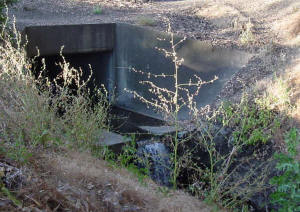
Palm Ave Culvert, 2003 |
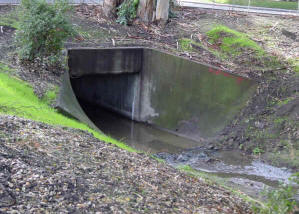
Palm Ave Culvert, 2004 |
| About 60 Eucalyptus trees
were removed in an incised portion of the creek. The area has
been terraced and revegetated to slow down the water flow.
|
|
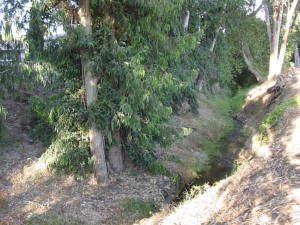
Mission Creek Drive, 2003 |
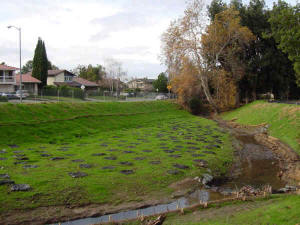
Mission Creek Drive, 2004 |
|
Old concrete
structures where replaced with rip-rap and vegetation. The old
Covington Bridge was replaced with a higher bridge to prevent
damage during high flows. |
|
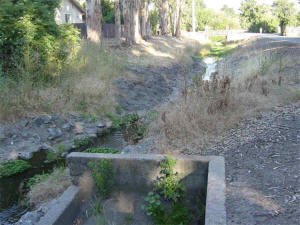
Covington South, 2003 |
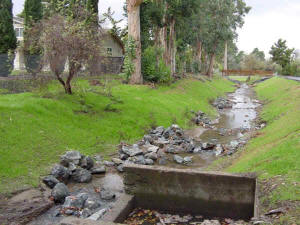
Covington South, 2004 |
|
Pools and
riffles were created downstream from the Covington Bridge to
increase habitat value and to slow water flow. |
|
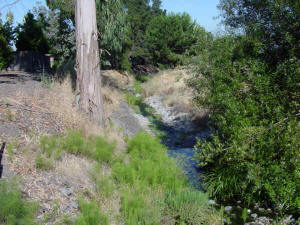
Covington North, 2003 |
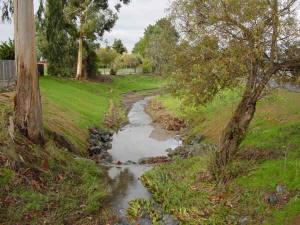
Covington North, 2004 |
|
The stream
was diverted away from the bank near Chadbourne Elementary
School and the area was terraced to help decrease flow.
Students can now access the area through their playground. |
|
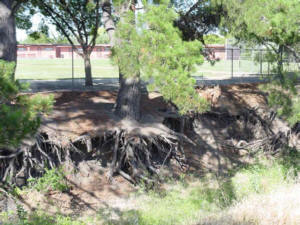
Chadbourne, 2003 |
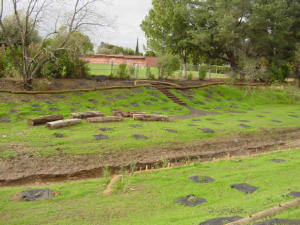
Chadbourne, 2004 |
|
Near the
Hopkins soccer field, the trail was moved about 20 feet toward
the field. This allowed room to meander Mission Creek to
reduce the erosion of the banks. The walnut and red willow
trees are used to help keep the creek within its new channel.
|
|
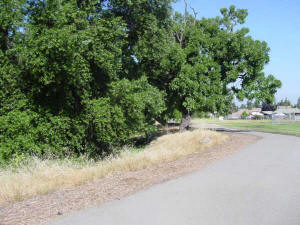
Hopkins field, 2003 |
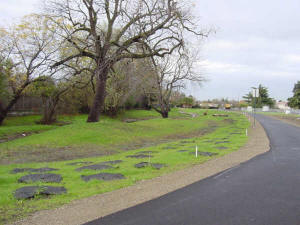
Hopkins field, 2004 |
|
The stream
channel was moved and widened to prevent undercutting of the
creek along the fence of nearby homes. |
|
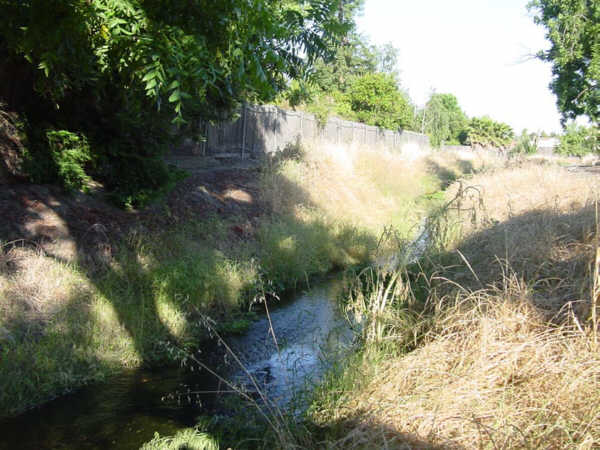
Hopkins, 2003 |
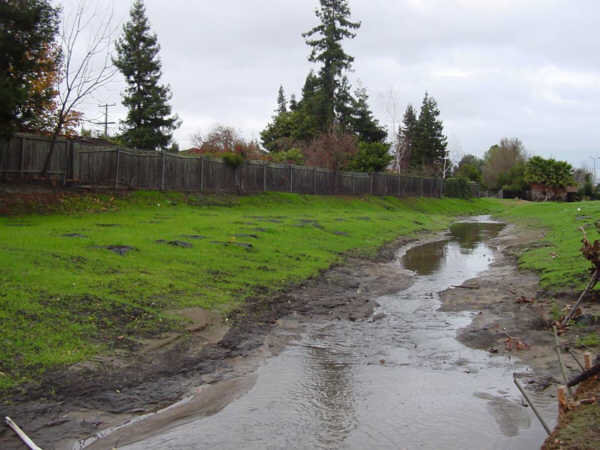
Hopkins, 2004 |
|